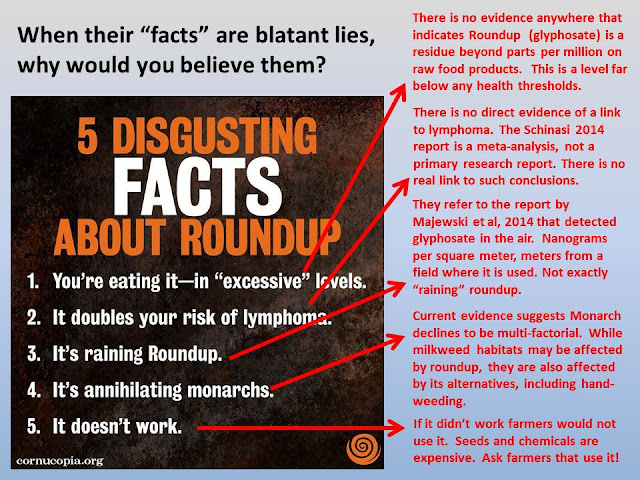Scaring People with False Information

The trend continues. Organizations committed to ending the use of genetically modified seeds and their associated products continue to fabricate misinformation solely with the intent of misleading consumers. Today's example is an inflammatory meme posted by the Cornucopia Institute. It makes five statements, none that are true, and solely broadcast with an intent to spread fear and misinformation. "5 Disgusting Facts" are really five disgusting lies. Blatant misrepresentation of information purely designed to spread fear and misinformation. Why do people believe such nonsense? The beauty of this kind of communication is that it does show the clear intentions of the author, in this case the Cornucopia Institute. It shows they are not committed to the truth, but instead are a depot for rhetoric designed to mislead consumers, and frighten them to affect their attitudes toward biotechnology and farming. It is amazing to me that people c...








